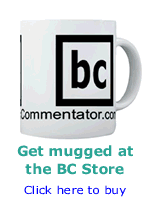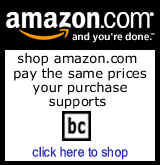
|
|||||||||||||||||||||
 |
|||||||||||||||||||||
 |
|||||||||||||||||||||
 |
|||||||||||||||||||||
 |
|
|
The following was a Chancellor’s Distinguished Lecture delivered at Fayetteville State University [University of North Carolina – Fayetteville], November 14, 2006. The racialized criminal justice system of America, with its two million prisoners, with four million others who are either on probation, parole or awaiting trial today, represents the greatest political and moral challenge to the survival of democracy today. Abraham Lincoln once declared nearly 150 years ago, that this nation could not endure being “half slave and half free.” The “new” slavery, the “color-blind racism” of the twenty-first century, has divided this nation by a new form of racialized inequality. The criminal justice system, and what many scholars now describe as the “Prison Industrial Complex,” are responsible for condemning tens of millions of American citizens to disenfranchised lives, shattered aspirations for their children, and alienation from civil society and public life. I deeply appreciate the generous invitation to speak at Fayetteville State University, as part of the “Chancellor’s Distinguished Lecture Series,” which has allowed me the opportunity to speak critically about these issues with you. I also wish to tank my old friend, Dean David Barlow, whose scholarly research in the fields of race, crime and social justice, is widely known and respected. This evening, the subject of my lecture, “Race-ing Justice, Disenfranchising Lives,” addresses four key ideas, which I would like to outline briefly: First, in the final two decades of the twentieth century, there was a conservative reaction against the judicial and legislative achievements of the Civil Rights Movement, which aimed at dismantling affirmative action programs, minority scholarships and race sensitive admissions programs into colleges. Such programs had largely been responsible for quadrupling the size of the African-American middle class between 1968 and 1995. Second, this assault against civil rights and affirmative action coincided with an unprecedented expansion of prisons, and the mass incarceration of millions of mostly Blacks and Latinos, who were often stripped of their voting rights, educational and economic opportunities. Third, the result of these two processes, the “New Racial Domain” of the twenty-first century, is an unholy trinity of mass unemployment, mass incarceration, and mass disenfranchisement, culminating in civil death, for the oppressed. Finally, I pose the question, how should scholars and the field of higher education respond to this great political and moral crisis? One of the greatest structural impediments to human development throughout U.S. history has been the barrier of racism. Despite a half century of reforms, it remains a structure of racialized discrimination and unfairness that American society has not yet overcome; so it is on this issue of racialized inequality that I would like to begin my lecture.
What do scholars in the social sciences analyze when they examine structural racism today? The “white” and “colored” signs of the Jim Crow South have long since disappeared. Legal racial segregation in the United States was outlawed more than a generation ago. However, scholars such as sociologist Lawrence D. Bobo have argued that the traditional color line in American life has not “vanished,” but instead been “merely reconfigured.” “The death of Jim Crow Racism has left us in an uncomfortable place that I sometimes call a state of Laissez Faire racism,” he wrote. Bobo described laissez-faire racism “as the case when society has ideals, but openness to very limited amounts of integration at the personal level remains, there is political stagnation over some types of affirmative action, quite negative stereotypes of racial minorities persist, and a wide gulf in perceptions regarding the importance of racial discrimination remains.” Many middle-class Blacks and Latinos today accept the national political narrative about the pluralistic promise of American democracy: through individual initiative and personal responsibility, we teach our children, success and upward mobility are possible. The fundamental problem with this perspective is that “laissez-faire racism” is still racism, albeit less overt and articulated in the race-neutral language of fairness. The continuing existence of racial inequalities that can be measured in social outcomes is not a product of the lack of individual initiative on the part of racial minorities, but of deep structural barriers that continue to be maintained through the pervasive power of white privilege. Racial inequality therefore presents itself, in the post-Civil Rights era, as a “normal” aspect of the general social fabric of American society. There are always “winners” and “losers” in the competition for resources and power. The implications that if African Americans still find themselves at the lower end of society’s totem pole, the overwhelming logic of common sense is that they have no one to blame but themselves. The modern assault against diversity, racial fairness
and human equality in America has been simultaneously political,
economic, cultural, and ideological. There was in the 1980s and
1990s a dedicated, concerted effort by conservatives to literally
turn the discourse of civil rights upside down; in effect, to
rewrite the American public’s memory about what had White moderates and liberals who had long defended race-based affirmative action programs waffled and largely collapsed before the conservative onslaught. Setting the tone was President William Jefferson Clinton, who in his re-election campaign of 1996 declared that he had “done more to eliminate affirmative action programs I didn’t think were fair and tighten others up than my predecessors have since affirmative action has been around.” Clinton’s failure to frame the continuing necessity for affirmative action around issues of U.S. racial history, and the need to implement measures of compensatory justice for historically oppressed minorities, would prove decisive. In 1996, the U.S. Court of Appeals for the Fifth Circuit, in the Hopwood v. State of Texas decision, outlawed the use of race as a factor in admissions to universities. Initiative 200 in Washington State in 1998 followed California in outlawing affirmative action enforcement. As a direct consequence, in the first year of Proposition 209’s enforcement, the number of African-American first-year undergraduates enrolling at the Berkeley campus fell from 258 to 95, a 63 percent decline. At the University of California at Los Angeles, the drop was from 211 Black students down to 125 students. Advocates of affirmative action then largely jettisoned historically-grounded claims to racial justice for Blacks, tactically falling back to two more pragmatic approaches: first, race-neutral schemes that would admit a certain fixed percentage of a state’s graduating high school seniors into a state university system; second, restructuring formerly race-based fellowship programs to include Asians, low-income whites, and others defined either as “underrepresented” or from “disadvantaged backgrounds.” Both of these approaches are highly problematic, from the vantagepoint of African-American and Latino interests. The fixed percentage approach essentially rewards the existence of racial residential segregation, giving the greatest access to minority students living in hypersegregated urban schools, but severely reducing college access to qualified Black students attending mixed or predominantly white suburban schools. In Texas, a “top 10 percent plan” was adopted in 1997 following the Hopwood decision, and almost immediately both the University of Texas at Austin and Texas A&M, the state’s two flagship institutions, experienced modest declines in minority student population. By the fall of 2002, of the matriculating freshmen, African Americans comprised only 3 percent, and Latinos under 10 percent - in a state where over 40 percent of the population is Latino and African American.
Curiously, at precisely this same historical moment, there was a rapid expansion in the personnel of the criminal-justice system, as well as the construction of new prisons throughout the United States. What occurred in New York State, for example, was typical of what happened nationally. From 1817 to 1981, New York had opened thirty-three state prisons. From 1982 to 1999, there were more than 71,000 prisoners in New York State correctional facilities. In 1974, the number of Americans incarcerated in all state prisons stood at 187,500. By 1991, the number had reached 711,700. Nearly two-thirds of all state prisoners in 1991 had less than a high-school education. One-third of all prisoners were unemployed at the time of their arrests. Incarceration rates by the end of the 1980s had soared to unprecedented rates, especially for Black Americans. As of December 1989, the total U.S. prison population, including federal institutions, exceeded 1 million for the first time in history, an incarceration rate of the general population of 1 out of every 250 citizens. For African Americans, the rate was over 700 per 100,000 or about seven times higher than for whites. About one-half of all prisoners were Black. Twenty-three percent of all Black males in their twenties were either in prison, on parole, on probation, or awaiting trial. The rate of incarceration of Black Americans in 1989 had even surpassed that experienced by Blacks who still lived under the apartheid regime of South Africa. By the early 1990s, rates for all types of violent crime began to plummet. But the laws sending offenders to prison were made even more severe. Children were increasingly viewed in courts as adults and subjected to harsher penalties. Laws like California’s “three strikes and you’re out” eliminated the possibility of parole for repeat offenders. The vast majority of these new prisoners were nonviolent offenders, and many of these were convicted of drug offenses that carried long prison terms. In New York, African Americans and Latinos made up 25 percent of the total population, but by 1999 they represented 83 percent of all state prisoners and 94 percent of all individuals convicted on drug offenses. The pattern of racial bias in these statistics is confirmed by the research of the U.S. Commission on Civil Rights, which found that while African Americans today constitute only 14 percent of all drug users nationally, they account for 35 percent of all drug arrests, 55 percent of all drug convictions, and 75 percent of all prison admissions for drug offenses. Currently, the racial proportions of those under some type of correctional supervision, including parole and probation, are one in fifteen for young white males, one in ten for young Latino males, and one in three for voting African-American males. Statistically today, more than eight out of every ten African-American males will be arrested at some point in their lifetime. Structural racism is so difficult to dismantle in our nation today, in part, because political leaders in both major parties have deliberately redirected billions of our tax dollars away from investments in public education into the construction of what many scholars now describe as a prison industrial complex. This is the terrible connection between education and incarceration. A 1998 study produced by the Correctional Association of New York and the Washington, D.C.-based Justice Policy Institute illustrated that in New York State hundreds of millions of dollars have been reallocated from the budgets of public universities to prison construction. The report stated: “Since fiscal year 1988, New York’s public universities have seen their operating budgets plummet to 29 percent while funding for prisons has increased by 76 percent. In actual dollars, that nearly has been an equal trade-off, with the Department of Correctional Sciences receiving a $761 million increase during that time while state funding for New York’s city and state university systems has declined by $615 million.” By 1998, New York State was spending nearly twice what it had allocated to run its prison system a decade earlier. To pay for that massive expansion, tuitions and fees for students at the State University of New York (SUNY) and the City University of New York (CUNY) were dramatically hiked.
For Black and Latino young adults, these shifts have made it much more difficult to attend college than in the past, but much easier to go to prison. The 1988 New York State study found: “There are more Blacks (34,809) and Hispanics (22,421) locked up in prison than there are attending the State University of New York, where there are 27,925 Black and Hispanic students.” Between 1989 and 1998, there were more Blacks entering the prison system for drug offenses each year than there were graduating from SUNY with undergraduate, masters, and doctoral degrees - combined.” In June 2003, the U.S. Supreme Court decided two lawsuits involving affirmative action programs at the University of Michigan at Ann Arbor. The most important of the two decisions, Grutter v. Bollinger, declared that there was a compelling state interest in fostering programs enhancing “diversity,” and that the quality of education was enriched by having individuals from different racial and ethnic backgrounds as part of a university enrollment. Therefore, the court declared in its narrow five to four ruling, the use of race as a factor was acceptable, so long as it was not applied as a quota. The initial response from the academic community was that Grutter represented a clear victory for the forces of affirmative action and “diversity.” They unfortunately ignored the full weight of the majority’s opinion on the high court: that universities had to consider prospective students henceforth “as individuals” and not to reject or admit them through any programs based primarily or exclusively on racial categories. This part of the ruling was quickly interpreted to mean that all programs within a college or university should not be based primarily or exclusively on racial categories. From late 2003 through 2004, in a relatively brief period of time, hundreds of U.S. universities and colleges shut down or significantly transformed their minority-oriented programs. The list was truly stunning: at Yale University, a summer pre-registration program for pre-freshmen, “Cultural Connections,” was opened to white participation; at Princeton University, all “race-exclusive programs” were abruptly halted, including its Junner Summer Institute that annually brought African-American and Latino college students to the Woodrow Wilson School of Public and International Affairs; at Boulder, University of Colorado’s “Summer Minority Access to Research Training Program” was renamed and opened to whites; at the California Institute of Technology, its campus visit program designed for Blacks, Latinos, and American Indians was opened to whites and Asian Americans; at Indiana University, its nine-week “Summer Minority Research Fellowship” originally designed “to get minority high school and college students interested in medical research by matching them with mentors” was restructured to recruit Asian Americans and whites; at St. Louis University, a scholarship program annually awarding $10,000 each to 30 African-American students was “disbanded” and new “Martin Luther King, Jr.” scholarships were substituted, reduced to $8,000 per student, and accepted without consideration of race; and at Williams College in Massachusetts, a pre-doctoral fellowship program, which for more than a decade awarded annually two to five general dissertation stipends to Black and Latino advanced graduate students, with the original purpose of increasing minority professors, has been radically opened to anyone, regardless of color, who is deemed “under-represented,” such as “women in physics departments,” or “white applicants in Asian Studies.” Upon reflection, Grutter was both a victory and a defeat. It marked a cruel defeat that will reduce the opportunities for education advancement for hundreds of thousands of Latino and African-American students in the coming years, all in the name of “diversity.” This is the racialized context in which we must analyze and discuss what is now occurring in the contemporary U.S. criminal justice system. The system of Jim Crow segregation may have disappeared legally, but in its place there has emerged what I call the “New Racial Domain,” or NRD. This New Racial Domain is the complex reconfiguration of race and power in the context of the political economy of neoliberalism and globalization. Simply put, the matrix of the New Racial Domain is a deadly triangle, or unholy trinity of structural racism: mass unemployment, mass incarceration, and mass disfranchisement. This triangle of “color-blind racism” creates an endless cycle of economic marginalization, stigmatization, and social exclusion, culminating in civil and social death. The cycle of destruction starts with chronic, mass unemployment and poverty. Real incomes for the majority of the working poor actually fell significantly during Clinton’s second term in office. After the 1996 welfare act, the Great Society era’s social safety net was largely pulled apart. As the Bush administration took power, chronic joblessness spread to Black workers in the manufacturing sector. By early 2004, in cities such as New York, fully one-half of all Black male adults were outside of the paid labor force.
Mass unemployment inevitably feeds mass incarceration. About one-third of all prisoners were unemployed at the time of their arrests, and others average less than $20,000 annual incomes in the year prior to their incarceration. Today about one in five Americans possesses a criminal record. Mandatory-minimum sentencing laws adopted in the 1980s and 1990s in many states stripped judges of their discretionary powers in sentencing, imposing draconian terms on first-time and non-violent offenders. Parole has been made more restrictive as well, and in 1995 Pell grant subsidies supporting educational programs for prisoners were ended. For those fortunate enough to successfully navigate the criminal justice bureaucracy and emerge from incarceration, they discover that both the federal and state governments explicitly prohibit the employment of convicted ex-felons in hundreds of vocations. The cycle of unemployment frequently starts again. The greatest victims of these racialized processes of unequal justice, of course, are African-American and Latino young people. In April 2000, utilizing national and state data compiled by the FBI, the Justice Department and six leading foundations issued a comprehensive study that documented vast racial disparities at every level of the juvenile justice process. African Americans under age eighteen constitute 15 percent of their national age group, yet they currently represent 26 percent of all those who are arrested. After entering the criminal-justice system, white and Black juveniles with the same records are treated in radically different ways. According to the Justice Department’s study, among white youth offenders, 66 percent are referred to juvenile courts, while only 31 percent of the African-American youth are taken there. Blacks make up 44 percent of those detained in juvenile jails, 46 percent of all those tried in adult criminal courts, as well as 58 percent of all juveniles who are warehoused in adult prison. In practical terms, this means that young African Americans who are arrested and charged with a crime are more than six times more likely to be assigned to prison that white offenders. For those young people who have never been to prison before, African Americans are nine times more likely than whites to be sentenced to juvenile prisons. For youths charged with drug offenses, Blacks are forty-eight times more likely than whites to be sentenced to juvenile prison. White youths charged with violent offenses are incarcerated on average for 193 days after trial; by contrast, African-American youths are held 254 days, and Latino youths are incarcerated 305 days. Even outside of the prison walls, the Black community’s parameters are largely defined by the agents of state and private power. By 2002, there were approximately 650,000 police officers and 1.5 million private security guards in the United States. Increasingly, however, Black and poor communities are being “policed” by special paramilitary units, often called SWAT (Special Weapons and Tactics) teams. Researcher Christian Parenti cited studies indicating that “the nation has more than 30,000 such heavily armed, military trained police units.” SWAT-team mobilizations, or “call outs,” increased 400 percent between 1980 and 1995, with a 34 percent increase in the incidents of deadly force recorded by SWAT teams from 1995 to 1998. What are the practical political consequences for regulating Black and brown bodies through the coercive institutional space of our correctional facilities? Perhaps the greatest impact is on the process of Black voting. According to the 1998 statistical data of the Sentencing Project, a non-profit research center in Washington, D.C., forty-eight states and the District of Columbia bar prisoners who have been convicted of a felony from voting. Thirty-two states bar ex-felons who are currently on parole from voting. Twenty-eight states even prohibit adults from voting if they are felony probationers. There are seven states that deny voting rights to former prisoners who had been serving time for felonies, even after they have completed their sentences. In Arizona, ex-felons are disfranchised for life if they are convicted of a second felony. Delaware disfranchises some ex-felons for five years after they finish their sentences, and Maryland bars them from voting for an additional three years.
The net result to democracy is devastating. The Sentencing Project released these statistics in 1998:
The Sentencing Project added that
“the scale of felony voting disenfranchisement is far greater
than in any other nation and has serious implications for democratic
processes and racial inclusion.” In effect, the Voting Rights
Act of 1965, which guaranteed millions of African Americans the
right to the electoral franchise, is being gradually repealed by
state restrictions on voting for ex-felons. A people who are imprisoned
in disproportionately higher numbers, and then systematically denied
the right to vote, can in no way claim to live under a democracy.
The consequence of such widespread disfranchisement is what can be called “civil death.” The individual who has been convicted of a felony , serves time, and successfully completes parole nevertheless continues to be penalized at every turn. He/she is penalized in the labor force, being denied certain jobs because of a criminal record. He/she has little direct access or influence on the decision-making processes of the political system. He/she may be employed and pay taxes, assuming all of the normal responsibility of other citizens, yet may be temporarily or permanently barred from the one activity that defines citizenship itself - voting. Individuals who are penalized in this way have little incentive to participate in the normal public activities defining civic life because they exercise no voice in public decision making. Ex-prisoners on parole are also frequently discouraged from participation in public demonstrations or political meetings because of parole restrictions. For many ex-prisoners, there is a retreat from individual political activity; a sense of alienation and frustration easily leads to apathy. Those who experience civic death largely cease to view themselves as “civic actors,” as people who possess the independent capacity to make important changes within society and within governmental policies. How can research universities respond to this unprecedented assault on democratic values such as civil rights, equality regardless of race under the law, and fairness within our criminal justice system? Scholars must ask what is the long-term national impact for destroying the lives of millions of Black and brown people in America? We foster the illusion of safety and security, but not its reality. We spend $150 billion to pursue a “war against terrorism” by occupying Iraq, where we discovered not a single weapon of mass destruction. Yet, for all the Bush administration’s rhetoric about “homeland security,” our neighborhoods are increasingly less safe. In 2004, because of budget reductions, Cleveland laid off 250 police officers, 15 percent of its total police force. In Los Angeles County, in 2005, the Sheriff’s Department fired 1,200 deputies and was forced due to budget cuts to close several county correctional facilities. In Pittsburgh, one-quarter of its entire police force was cut. In Houston, 190 correctional officers in the city jail were let go, and replaced by Houston police officers. Innovative law enforcement projects that were effective in reducing homicide rates and street crime in the 1990s are being scaled back and even eliminated. So in our neighborhoods we are actually less safe, regardless of what the Bush administration claims about the “war on terror.”
Our goals must be restorative justice and civic capacity building: to bring back, from the margins, millions of Americans who are routinely denied jobs due to prior felony convictions; to bring back, in our political voting process, millions of American citizens who are unfairly excluded from exercising their democratic right to vote; to bring back ex-prisoners into our economy, by challenging and eliminating the state-sanctioned lists of specific jobs that former prisoners are denied the opportunity to apply for and to hold; to bring back, by civic engagement, the latent leadership, creativity and talent of millions of people who have been victimized by the New Racial Domain, from employment into the economic mainstream. We must insist upon reforms in our legal system, that treat all juveniles regardless of race with equal fairness under the law. We must demand the infusion of constructive, meaningful educational programs inside our prisons, the availability of Pell grant assistance, that provides a bridge of learning for hundreds of thousands of incarcerated women and men. We must implement “restorative justice” programs that focus on “therapeutic jurisprudence” and rehabilitative programs, constructive and creative alternatives that redirect hundreds of thousands of non-violent offenders and first-time felony offenders out of the dead-end of maximum security penal institutions. We must demand for our neighborhoods new funds to implement and sustain constructive, non-confrontational policing approaches to most local crime. In January 2002, the Institute for Research in African American Studies (IRAAS) at Columbia University initiated the Africana Criminal Justice Project (ACJP) with the support of the Criminal Justice Initiative of George Soros’s Open Society Institute. ACJP developed and enhanced research, education and collective action initiatives at the intersection of race, crime and justice in the United States. The central goals of the project continue via a variety of mechanisms, which include:
The Africana Criminal Justice Project’s research and education initiatives have developed a critical appreciation of crime, punishment and resistance to injustice within the Black experience. These initiatives have included: (1) developing an annotated bibliography of works by Black writers on criminal justice issues; (2) publishing innovative scholarship on race, crime and justice from scholars in a variety of academic fields; (3) documenting oral histories of formerly incarcerated Black men and women; (4) teaching undergraduate and graduate courses; (5) organizing public lectures, conferences and seminars; and (6) conducting the first comprehensive study of the treatment of criminal justice-related issues in African-American studies programs at colleges and universities across the country.
ACJP has also hosted a number of public events and community-group collaborations that have helped pave the ground for effective outreach efforts that will be crucial to the success of “Disenfranchisement, Voting Rights and Criminal Justice Initiative.” In April, 2003, ACJP hosted a unique academic-community conference themed, “Africana Studies Against Criminal Injustice: Research-Education-Action.” This initial conference brought together over 400 scholars, students, practitioners, organizers, activists and interested members of the general public, who discussed and debated the issues raised about the racial injustices within the criminal justice system. In November 2004, ACJP hosted a symposium entitled, “Chanting Down the Walls.” The symposium focused on the role of the arts in the criminal justice system and its relationship to how the arts can be used as an organizing tool and theme to bring together divergent groups and interests interested in transforming juveniles already in the system. The most recent conference was hosted by ACJP in April 2005. This third public event, entitled, “Criminally Unjust: Young People and the Crisis of Mass Incarceration,” examined the effects of mass criminalization of communities of color and its impact on young people. This unique gathering of students, teachers, scholars, organizers and artists featured a Youth Congress on Criminal Injustice, with delegations from high schools and community groups from across the city. In addition to public events, symposiums and conferences, ACJP has developed several seminars taught in IRAAS at Columbia University. In 2003, Dr. Geoff K. Ward (now at Northeastern University) offered graduate level seminars on the collateral consequences of criminal justice policy. Through assigned readings, in-class discussion and a research module, the seminar examined the consequences of mass incarceration for individuals, families and communities of color. In 2004, Alfred Laurent created a seminar which brought graduate students into the high school on Riker’s Island to lead weekly workshops that used the arts as a lens to explore incarcerated young men’s perspectives about the criminal justice system and questions about social justice. The students’ work was published. And in 2005-2006, Dr. Keesha Middlemass developed two additional courses. One course focused on the policy impact of felony disenfranchisement laws at the graduate level, and through an examination and assessment of current scholarship, the class debated the legality of felony disenfranchisement laws from several social policy perspectives. The second course, developed for undergraduate students, examined voting rights in the United States from a constitutional perspective. An examination of the U.S. Constitution and major U.S. Supreme Court cases were examined to explore the development of voting rights with a focus on which groups of citizens were incorporated into the political process and which groups were marginalized. These various ACJP initiatives, courses and research efforts demonstrate an ability to conceive and develop organizing events, to work with a wide range of organizations, forge key relationships with area leaders and institutions, as well as provide educational opportunities that explore the intersection of race, crime and justice from different perspectives and models. Such efforts at bringing together multiple groups, communities and resources aids in the development of research projects, civic engagement and compiling information in one place that continually acts as a resource. Moreover, ACJP has moved from ideas to sustainable programs, and the “Disenfranchisement, Voting Rights and Criminal Justice Initiative” is ideally positioned to move ACJP from offering a set of sustainable programs to becoming a policy change agent. To conclude: it is abundantly clear that the political demand for mass incarceration and the draconian termination of voting rights to ex-felons will only contribute toward a more dangerous society. No walls can be constructed high enough, and no electronic surveillance cameras and alarms sophisticated enough, to protect white middle- and upper-class American families from the consequences of these policies. Keep in mind that approximately 600,000 people are released from prison every year; that about one-sixth of all reentering ex-prisoners, 100,000 people, are being released without any form of community correctional supervision; that about 75 percent of reentering prisoners have substance abuse histories; and that an estimated 16 percent suffer from mental illness. Nearly two-thirds of this reentering prison population will be arrested again within three years. The madness of our penal policies and of the criminal-justice system places the entire society at risk. Dismantling the prison industrial complex represents the great moral assignment and political challenge of our time.
During one of my last visits to Sing Sing, I noticed something new. The prison’s correctional officers had erected a large, bright yellow sign over the door at the prison’s public entrance. The colorful sign reads: “Through these doors pass some of the finest corrections professionals in the world.” I stood frozen for a second, immediately recalling the chillingly brutal sign posted above the entrance gate at Auschwitz and other concentration camps: Arbeit Macht Frei (“Work Makes Us Free”). I later asked Bill Webber and a few prisoners what they thought about the new sign. Bill thought a moment, then said simply, “demonic.” One of the M.A. students, a thirty-five-year-old Latino named Tony, agreed with Bill’s blunt assessment. But Tony added, “Let us face the demon head on.” With more than two million Americans who are now incarcerated, it is now time to face the demon head on. BC Editorial Board member Manning Marable, PhD is one of America’s most influential and widely read scholars. Since 1993, Dr. Marable has been Professor of Public Affairs, Political Science, History and African-American Studies at Columbia University in New York City. For ten years, Dr. Marable was founding director of the Institute for Research in African-American Studies at Columbia University, from 1993 to 2003. Dr. Marable is an author or editor of over 20 books, including Living Black History (2006); The Autobiography of Medgar Evers (2005); Freedom (2002); Black Leadership (1998); Beyond Black and White (1995); and How Capitalism Underdeveloped Black America (1983). His current project is a major biography of Malcolm X, entitled Malcolm X: A Life of Reinvention, to be published by Viking Press in 2009. Click here to contact Dr. Marable. |
|
| Home | |
| December 7, 2006 Issue 209 |
||||||||||||||
|
||||||||||||||
| Printer Friendly Version in resizeable plain text format | ||||||||||||||
 |
||||||||||||||
|
||||||||||||||
 |
||||||||||||||
 |
||||||||||||||
 |
||||||||||||||
 |
||||||||||||||
| |
||||||||||||||
| |
||||||||||||||




































